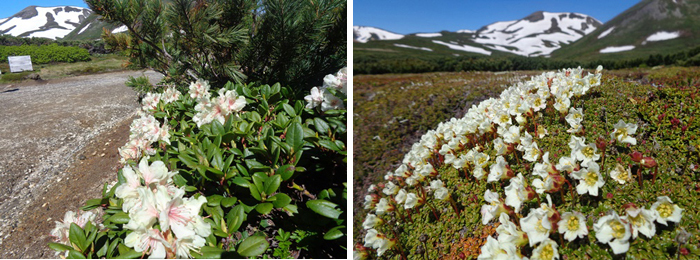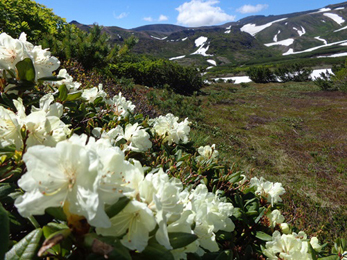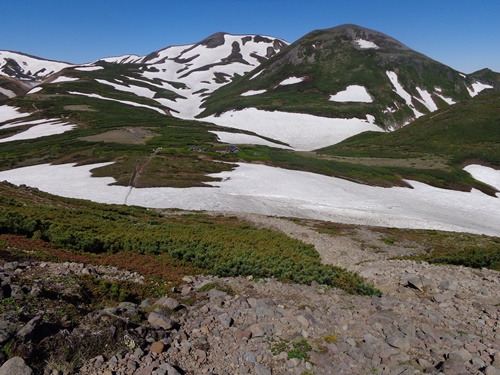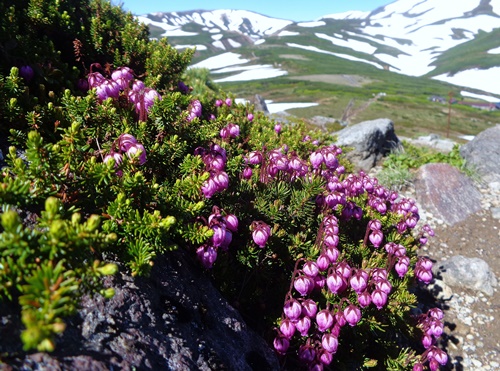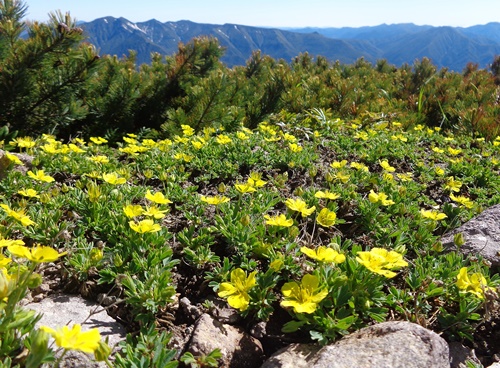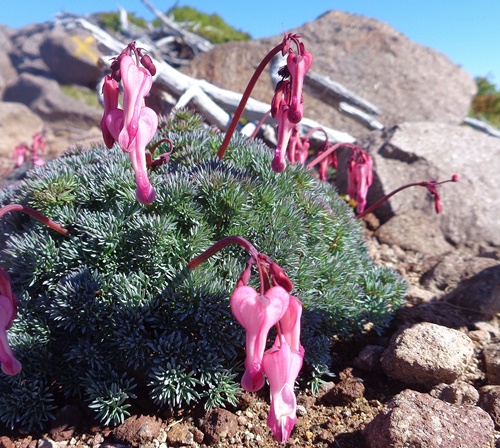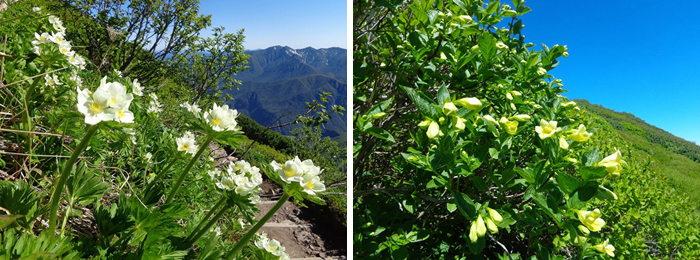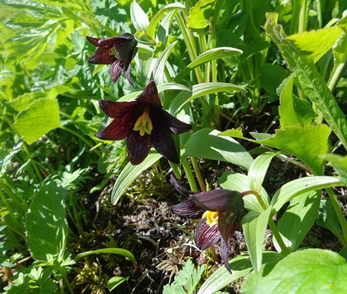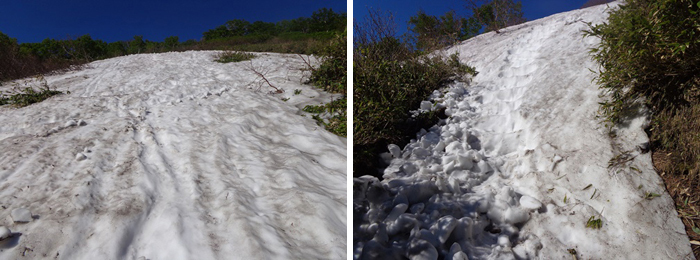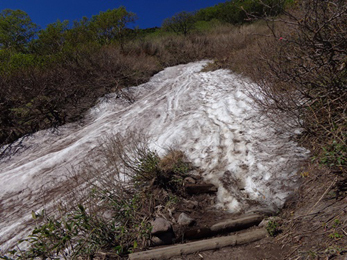The Rhododendron aureum are blooming near Ishimuro. There are still many buds remaining, so we can expect them to form communities in the days ahead.
The Rhododendron aureum are also blooming at Kumonotaira, although much snow still remains in areas where they normally form communities. Thus, it will be a while longer before the communities appear.
The Diapensia lapponica subsp. obovata flowers are still in peak viewing season, although their numbers are dwindling.
*The area around the Akaishi River is still completely covered with snow. The snow level has fallen in some places, so the river may become fordable at an early stage if the weather remains good. (At the present time, it is still possible to walk on the snow.)
*There is more snow than usual remaining in the snowy gorge at the Mt. Hokuchindake junction.
However, the slope is not as undulated as usual and has become somewhat easier to walk on with the early snowmelt.
*A snowy gorge remains before the Ohachidaira viewing platform, but the snow at Kumonotaira has disappeared.
*For mountain information, see: http://sounkyovc.net/trails/kuro/140624kuro.pdf
Photos: Rhododendron aureum near Ishimuro (left), Diapensia lapponica subsp. obovata and Rhododendron aureum (center and right) Jun. 24
The Rhododendron aureum are also blooming at Kumonotaira, although much snow still remains in areas where they normally form communities. Thus, it will be a while longer before the communities appear.
The Diapensia lapponica subsp. obovata flowers are still in peak viewing season, although their numbers are dwindling.
*The area around the Akaishi River is still completely covered with snow. The snow level has fallen in some places, so the river may become fordable at an early stage if the weather remains good. (At the present time, it is still possible to walk on the snow.)
*There is more snow than usual remaining in the snowy gorge at the Mt. Hokuchindake junction.
However, the slope is not as undulated as usual and has become somewhat easier to walk on with the early snowmelt.
*A snowy gorge remains before the Ohachidaira viewing platform, but the snow at Kumonotaira has disappeared.
*For mountain information, see: http://sounkyovc.net/trails/kuro/140624kuro.pdf
Photos: Rhododendron aureum near Ishimuro (left), Diapensia lapponica subsp. obovata and Rhododendron aureum (center and right) Jun. 24
